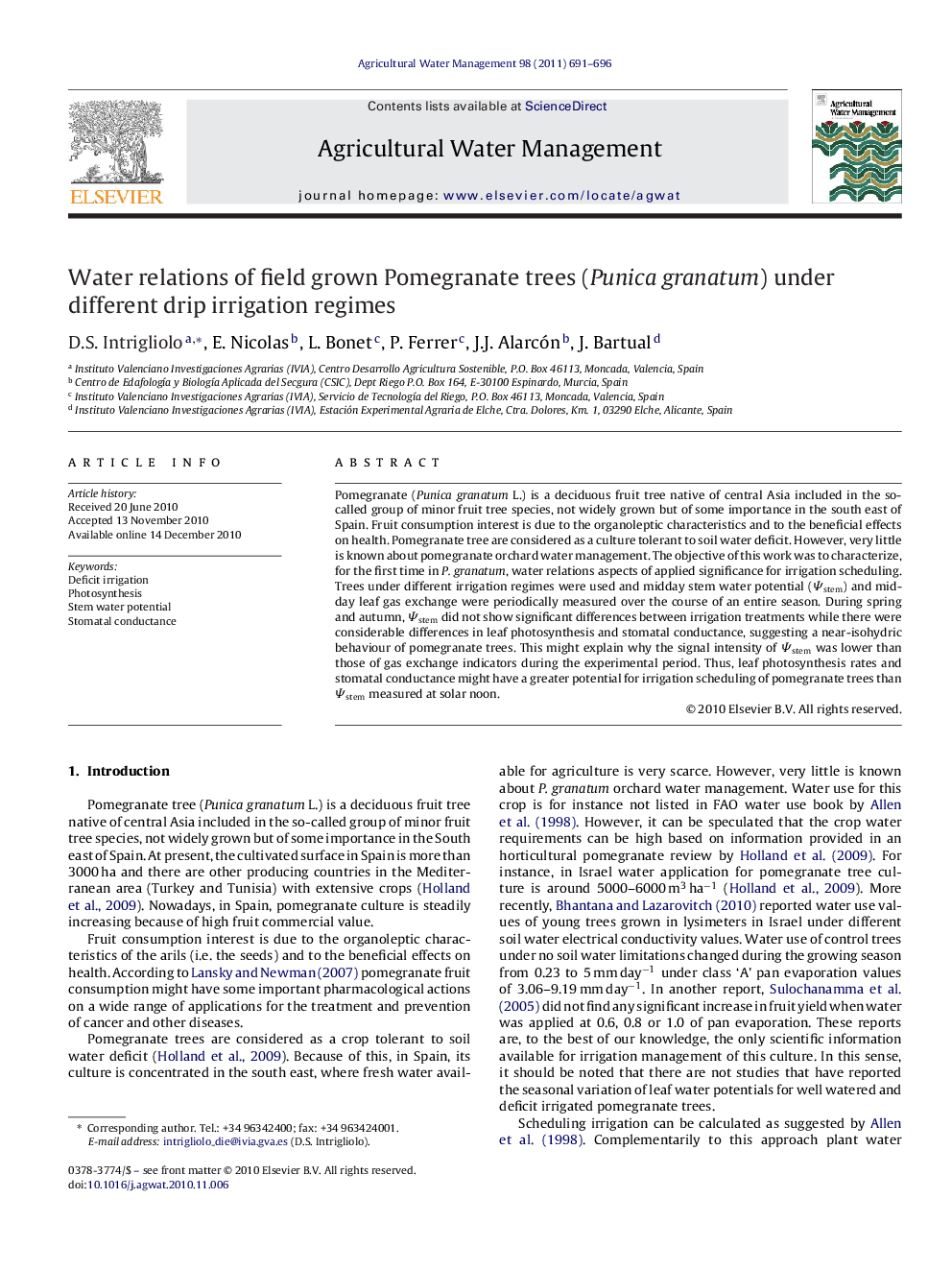| Article ID | Journal | Published Year | Pages | File Type |
|---|---|---|---|---|
| 4479554 | Agricultural Water Management | 2011 | 6 Pages |
Pomegranate (Punica granatum L.) is a deciduous fruit tree native of central Asia included in the so-called group of minor fruit tree species, not widely grown but of some importance in the south east of Spain. Fruit consumption interest is due to the organoleptic characteristics and to the beneficial effects on health. Pomegranate tree are considered as a culture tolerant to soil water deficit. However, very little is known about pomegranate orchard water management. The objective of this work was to characterize, for the first time in P. granatum, water relations aspects of applied significance for irrigation scheduling. Trees under different irrigation regimes were used and midday stem water potential (Ψstem) and midday leaf gas exchange were periodically measured over the course of an entire season. During spring and autumn, Ψstem did not show significant differences between irrigation treatments while there were considerable differences in leaf photosynthesis and stomatal conductance, suggesting a near-isohydric behaviour of pomegranate trees. This might explain why the signal intensity of Ψstem was lower than those of gas exchange indicators during the experimental period. Thus, leaf photosynthesis rates and stomatal conductance might have a greater potential for irrigation scheduling of pomegranate trees than Ψstem measured at solar noon.
Research highlights▶ Pomegranate trees have a near-isohydric behaviour. ▶ Leaf photosynthesis rate and stomatal conductance are more sensitive indicators of tree water status than stem water potential. ▶ The variability of gas exchange indicators was nearly two-fold in relation to stem water potential.
